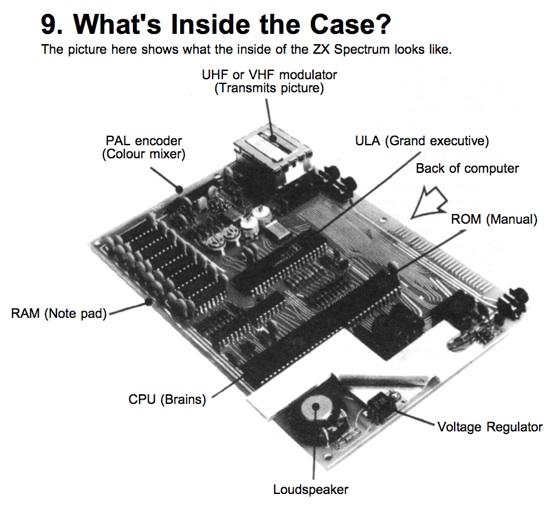This article is more than 1 year old
Happy 30th Birthday, Sinclair ZX Spectrum
The story of an historic micro
Motherboard manoeuvres
The Spectrum's hardware engineer was Richard Altwasser. A Sinclair Research employee, he joined the company in September 1980. He devised the Spectrum's logic board, nominally working under the oversight of Sinclair's Chief Engineer, Jim Westwood. But with Westwood's attention centred on rescuing Sinclair's troubled flat-screen TV project, Altwasser appears to have had a surprisingly free hand - within the cost and schedule constraints imposed by the company.
"We had plenty of freedom working at Sinclair but at the end of the day the company was run by one man and if a decision needed to be made, there was one man [Clive Sinclair] who took that decision," Altwasser would say later in 1982.

Steve Vickers (top left) and Richard Altwasser (top right) in the 1980s. Steve Vickers (bottom left) now
Fortunately, Altwasser had a very good working relationship with Vickers which enabled the two to work closely, a fact that undoubtedly ensured Sinclair was able to release the Spectrum to all intents and purposes on schedule.
By Jupter!
The two engineers' close partnership also led, in May 1982, to the pair leaving their respective employers to form a new home computer company, Rainbow Computing. Rainbow would soon be renamed Jupiter Cantab and go on to release the Jupiter Ace micro, a curious machine that looks like a cross between the ZX81 and the Spectrum and is most notable for eschewing the then de facto standard Basic programming language in favour of the lesser known Forth.
The Ace was a failure. Vickers subsequently became an academic, taking posts at Imperial College, London; the Open University; and, his current role, Senior Lecturer at the University of Birmingham.

Jupiter Cantab promotes the Jupiter Ace. But punters proved resistant to its charms
Source: Retrogeek
Altwasser would return to Sinclair, surviving the company's acquisition by Amstrad in 1986 to become Amstrad's Engineering Director. He left in 1992. Since then he has held senior technical roles at a variety of companies, including RM, and is now "Head of Inspire" at interactive learning firm Promethean.
At the heart of Altwasser's Spectrum design was a Zilog Z80A processor clocked to 3.5MHz. Vickers' Basic would be burned into 16KB of Rom. Not that the full amount was required. At launch, 1.3KB was empty, originally earmarked for code that would support Sinclair's planned peripherals, most notably the Microdrive, which proved unavailable for testing during the firmware's development.

Inside the Spectrum, from the ZX Spectrum Introduction manual by Steve Vickers and Robin Bradbeer, bundled with the computer
Nor was it ready by April, but nothing could hold the launch back. So the Rom shipped incomplete. It was initially thought that early adopters would be offered a free Rom updates when the code was complete and new chips could be blown, but by June Sinclair had shipped so many first-generation machines - 75,000 in all, somewhat justifying Clive Sinclair's drive for a at-all-costs launch - that that plan was no longer financially viable.
Instead, the complete firmware would ship on the peripherals' adaptor units, taking over from the Rom chip in the Spectrum when necessary.
